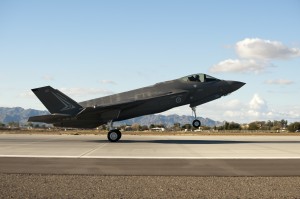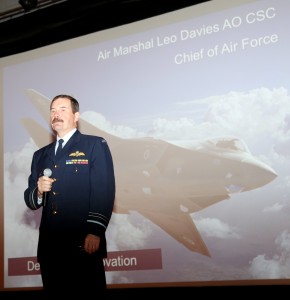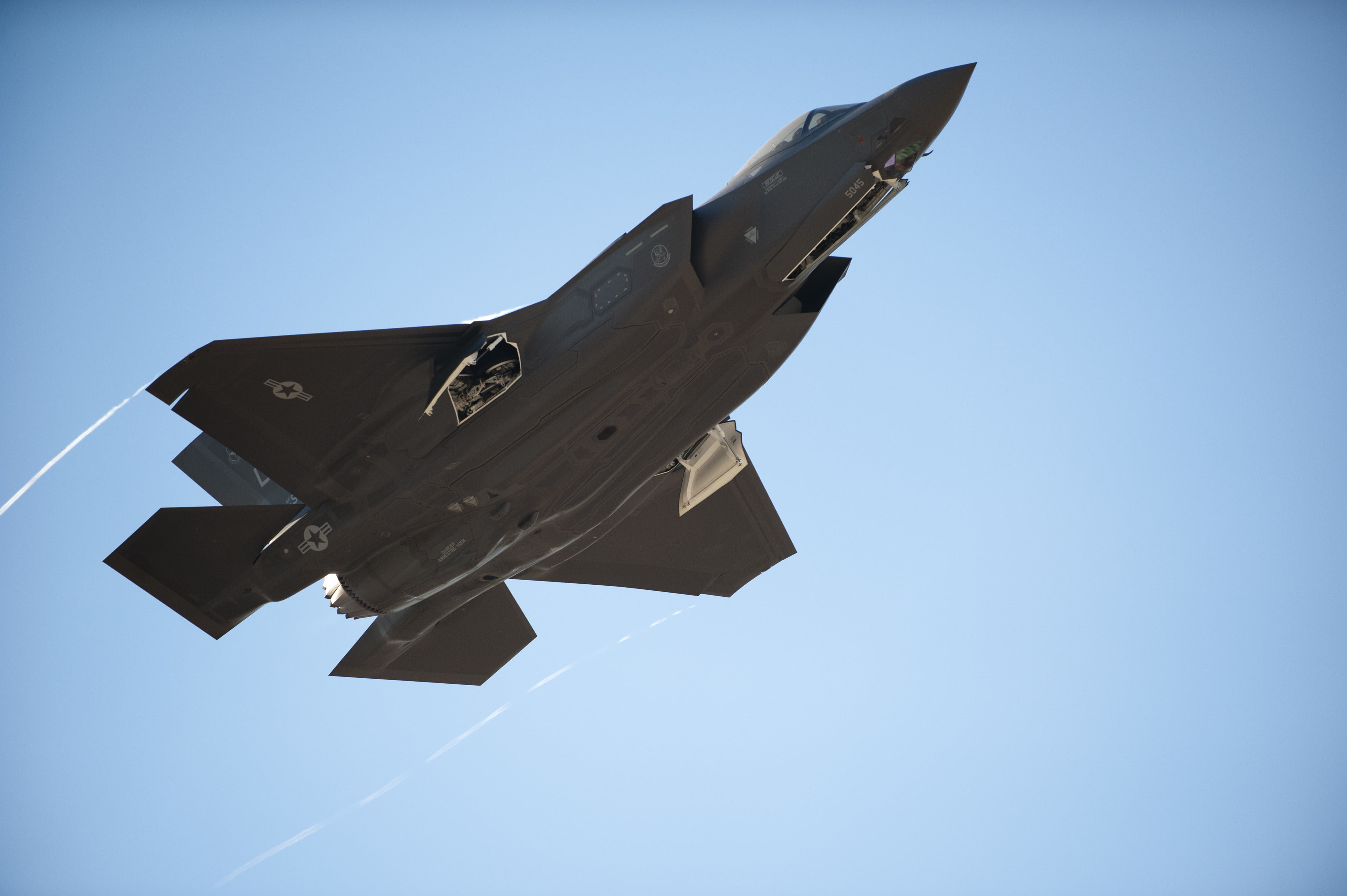2015-08-23 By Robbin Laird
My last assignment when working at the Institute for Defense Analyses was supporting the staff for the 1995 Roles and Missions Commission.
This Commission was headed by John White, who later was Deputy Secretary of Defense, and was formed to address a number of issues mandated by the Congress, including lessons learned from foreign militaries which could be applied to US forces.
http://edocs.nps.edu/dodpubs/topic/general/ADA295228.pdf
I worked on the lessons learned part of the effort and at the time it seemed to us that the Brits, the French and the Israelis had the most to teach us, and with a focus on public-private partnerships certainly the British who were far and away the leading MoD in pursuing this approach.
We worked hard and talked with many of the foreign militaries and came up with a good cut at the challenges and ways to adopt sensible things which others had been done.
When presented to the Commission, we were told that the research was good but irrelevant because “the Department of Defense is so much larger than every other Ministry of Defense so that no lessons could be learned or applied to DoD from foreign militaries.”
Certainly this thinking continues to thrive and survive inside Washington and beyond.
Yet with the diversity of challenges and dynamics of change in 21st century operations, this is less and less true.
And how various allies and partners deal with change and challenges is not only important for themselves, but any power which wishes to work with them.

And coalitions need to be built from those who can work together for common strategic purpose, not simply forged by those who wish to show up or as part of the list to generate the largest number of possible of participants.
With the coming of the F-35 global coalition, change will be driven more effectively by the edge forces, the USMC and smaller coalition airpowers.
There will be more integration, and less stovepipes getting in the way of the change which a fleet of flying combat systems able to operate in 360 combat space can deliver throughout an entire combat force.
Evidence of the impact of the smaller forces generating change is clearly the Royal Australian Air Force and its partner the Williams Foundation.
Where do you find cutting edge thinking about the impact of fifth generation airpower DISCUSSED IN PUBLIC on changing the entire approach to combat operations?
Washington?
Paris?
London?
Amazingly it is in Canberra, a town characterized by a Quantas staff member when flying into Canberra, as a place where you do not want to do everything during the day for you will have nothing to do at night.
I will be focusing upon the Plan Jericho approach as well as a wide range of interviews with the RAAF at leadership and squadron levels over the next few weeks and then circle back to highlight some key findings about the rethink and working of a defense transformation strategy in Australia.
The Williams Foundation hosted a seminar early in 2014 which focused on air combat operations through 2025 and identified key impacts which the new platforms of the RAAF and the coming of the F-35 would enable in transforming the force.
Then earlier this year, the Williams Foundation co-sponsored a seminar in Denmark to discuss the evolution of airpower. This was not US-led, but Australian-led which is a statement all by itself.
https://sldinfo.com/integrating-innovative-airpower-a-report-from-the-copenhagen-airpower-symposium/
And then this August, the Williams Foundation sponsored a seminar where the RAAF could discuss in public its approach and involved a large number of officers debating the way ahead.
As one US industrialist who attended noted: “The level of detail and scope of the discussion about how to shape new combat capabilities was amazing. And I wish we would see the USAF return to a leadership role in providing leadership in a transformation debate.”
I remember well a long discussion I had with Herman Kahn when I was a graduate student about his relationship with the USAF in thinking about the way ahead, and the challenges to innovate but the importance of leadership in the USAF to break glass to shape a way ahead.

In an article entitled In Defense of Thinking, Kahn underscored the importance of innovative thinking to shaping a way ahead:
In 1960 I published a book that attempted to direct attention to the possibility of a thermonuclear war, to ways of reducing the likelihood of such a war, and to methods for coping with the consequences should war occur despite our efforts to avoid it.
The book was greeted by a large range of responses some of them sharply critical.
Some of this criticism was substantive, touching on greater or smaller questions of strategy, policy, or research techniques.
But much of the criticism was not concerned with the correctness or incorrectness of the views I expressed.
It was concerned with whether any book should have been written on this subject at all.
It is characteristic of our times that many intelligent and sincere people are willing to argue that it is immoral to think and even more immoral to write in detail about having to fight a thermonuclear war.
We clearly need Kahn-like strategic thinking re-established in the United States.
But emotionalism and sentimentality, as opposed to morality and concern, only confuse debates.
Nor can experts be expected to repeat, “If, heaven forbid. ….,” before every sentence.
Responsible decision makers and researchers cannot afford the luxury of denying the existence of agonizing questions.
The public, whose lives and freedom are at stake, expects them to face such questions squarely and, where necessary, the expert should expect little less of the public.
All we now get is carping and political positioning from what passes for strategic thought.
For example one can look long and hard for the discussion of how exactly the United States would enforce its will on Iran when necessary to enforce the “agreement” with Iran.
It is not just about providing leadership in military operations; it is showing up and leading public debates as well.
I doubt if US politicians want this; but that is really beside the point.
And what think tank in Washington today would welcome a Herman Kahn?
The importance of a Foundation and an Air Force shaping a public debate about transformation under the influence of the F-35 is significant.
With the coming of a global fleet, and almost dead silence from the Air Forces acquiring the aircraft, it is refreshing to have a public force countering the Greek chorus undercutting the evolution of airpower and air-enabled operations.
The RAAF like the USMC is an F-18 fleet, which is moving from the F-18 to the F-35.
The RAAF does not see the F-35 as simply a day-one aircraft; but sees it very much as the USMC as a flying combat system to enables the entire force. The Royal Australian Air Force has made it very clear that the F-35 is the baseline aircraft for 21st century operations; the Super Hornet will be a contributing and complimentary asset for the RAAF.
The global enterprise of F-35s will not only generate pilots, maintainers, but also parts and upgrades amortized by the investments of multiple nations.
And weapons revolution will be a key dynamic as well, and the F-35 global fleet will receive regular focus of attention from the entire gamut of US and allied weapons manufacturers for a simple reason: there will be so many of them and in the hands of multiple users world wide.
And the global intelligence impact of the F-35 fleet will be significant for all users – the worldwide fleet will be major signals intelligence assets as part of its normal operation as tron warfare aircraft.
But you do not need to take it from me – just talk with the Aussies!
The (then) Chief of Air Force, Air Marshal Geoff Brown, is enthusiastic about the F-35’s stealth capabilities.
He was on the receiving end of fifth-generation stealth technology when he flew an F-15 “aggressor” against F-22 Raptors on Exercise Red Flag in the United States several years ago.
“We were never in a situation where we saw them at any time on radar or infrared,” Air Marshal Brown said.
“We never knew where they were or where we were killed from, so we had no situational awareness.
Then to go back and look at the situational awareness the F-22 had, it was quite a dramatic difference.
It the same sort of technology we’re getting but a little bit more advanced in some respects with the F-35.”

He said the jump between a fourth- and fifth-generation fighter was dramatic.
“It’s the difference between being in a biplane against a monoplane pre-World War II, the difference between a piston engine and a jet – it’s one of those game-changing events,” he said.
Air Marshal Brown said the announcement of an additional 58 Joint Strike Fighters allowed Air Force to plan for the full withdrawal of the 71 F/A-18A/B Hornets.
“The Hornet’s been the mainstay of our air combat fleet for nearly 30 years.
To be signed up to the future means we can go forward and plan how we’re going to transition,” he said.
“The transition will be quite a difficult thing to do because we need to move people from that era of technology into a completely different generation.”
Air Marshal Brown said the F-35As would need upgrades to maintain their combat edge but the Joint Strike Fighter program was designed for easier improvements than the F/A-18s.
And as the then Air Marshal Brown put it at the Williams Foundation Conference in early 2014:
With so much capability inherent in generation 4.5 fighters, it has been often asked why do we need 5th generation?
The answer to this is simple: we need to ensure we conduct tomorrow’s air combat operations with tomorrow’s capabilities.
Historical examples highlight loud and clear that today’s technology won’t be suitable in 2025, and certainly not in 2035.
And his discussion of the F-35 focused on a key element which will become evident as the F-35s in the Pacific becomes a fleet of enablers for deterrence in the depth: decision making superiority.
To achieve decision superiority in 2025 and beyond, Air Combat Operators will need to be able to see who and what is in the area of operations, with very few limits to arcs of coverage.
The fusing of multi-spectral sensors and electronic support must enable targets to be detected without the knowledge they are being tracked.
The cueing of capabilities must not be limited to on-board sensors; they must be available from multiple off-platform sources.
The networking capabilities of these future air combat assets must be a force multiplier.
They must be able to feed, and be fed from, multiple sources.
The end result is that the pilot must be able to focus solely on the fight, not allocating time and effort to managing data that supports the fight.
As the F-35 systems become realities, concepts of operations will change significantly and here the Air Marshall sounded a bit like Admiral Halsey who focused constantly on the importance of what he called, “training, training, and training.”
New capabilities breed new methods, and how a 5th generation fighter undertakes these missions in 2025 and beyond are unlikely to resemble yesterday’s air combat operations. In future, as it is now, the ability to integrate all the fundamental inputs to capability will still be what determines relative combat effectiveness.
The ability to fly an aircraft does not mean you have the ability to fight the aircraft.
This is never more so than in 5th generation fighters.
This is where training will be so important to our success in future air combat operations.
In spite of the reality of the coming of the F-35 so evident in USMC and RAAF behavior, we continue to see arguments for alternatives based on claims, which can be challenged by the reality of the aircraft itself.
So we learn from a Danish piece, reproduced in a Canadian newspaper, that the Super Hornet should be bought rather than either a Eurofighter or an F-35.
And we learn that Denmark does not need an F-35 because it is primarily a day one of the war airplane and Denmark does not really need that.
We learn that it is hard to maintain; we learn as well that the Super Hornet will be fully supported over the next thirty years.
And last time I looked, no one will be operating the Super Hornet in the Danish neighborhood, and the Dutch, Norwegian and British engagements in the region with F-35s seem to not show up as well.
One clear advantage of the F-35 is that it is built as an 8,000 hour tactical fighter; the F-18 is not.
It is suffering as well corrosion damage, which concerns the USN enough to have raised the subject in public.
https://sldinfo.com/building-an-8000-hour-tactical-aircraft-21st-century-materials-technology/
The F-35 can be a day one aircraft, or not.
And because one is never really certain when day one is, the aircraft’s ability to scan the battlespace, fuse data and share that data with an integrated fleet or transfer it elsewhere makes this a core intelligence asset in shaping pilot knowledge of the evolving combat space prior to the first shot being fired.
As Admiral Manazir put it with regard to the F-35:
The fifth generation is bringing us the opportunity and indeed the imperative to fundamentally alter the way we look at air warfare. The F-35 is not an A or an E or an F; it is all of those.

Earlier we had an F-14, an A-6 and an EA-6B and needed all three to do our job; now one airplane blends those capabilities and we can leverage that as we look at the integration of the other capabilities of the air wing we are developing.
Fifth generation is opening up so many possibilities that how we used to think about our capabilities is changing; how do we wring out the full capabilities of the air wing with the fifth generation as a catalyst for change?
The Williams Foundation and the RAAF are to be congratulated for publically discussing the way ahead in airpower under the impact of the F-35.
As John Blackburn, the guiding light for the Williams Foundation and a former Air Vice Marshal of the RAAF, put it whimsically when discovering fifth generation wine in Australia:
“We are so advanced in this country, we even have fifth generation wines!”


